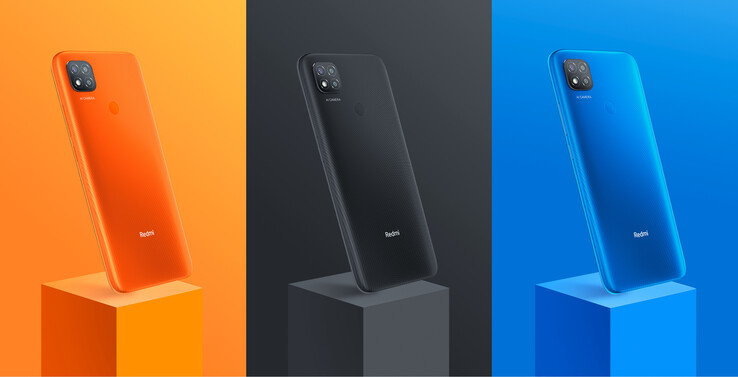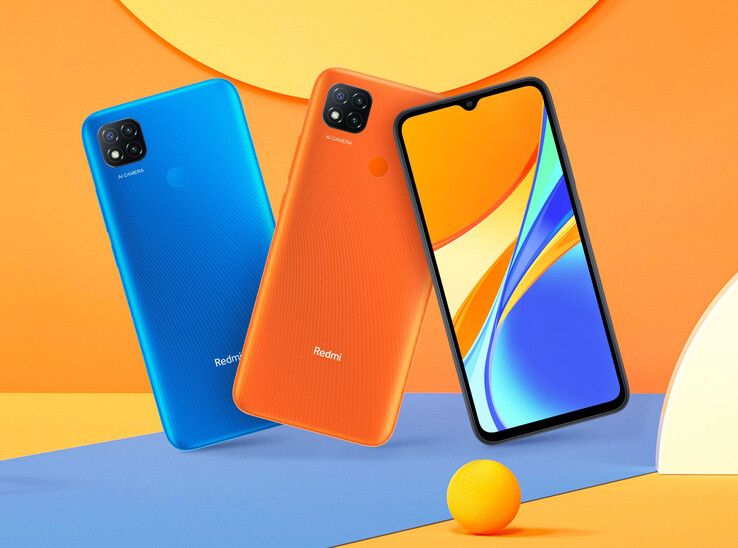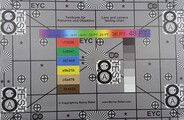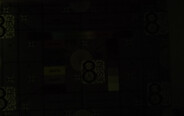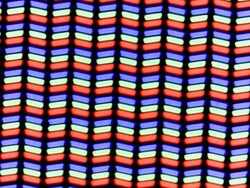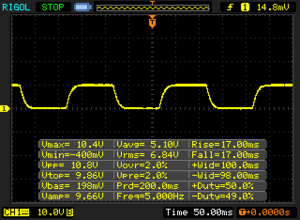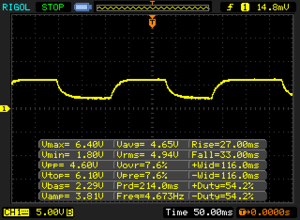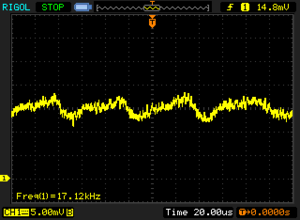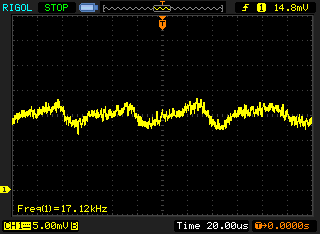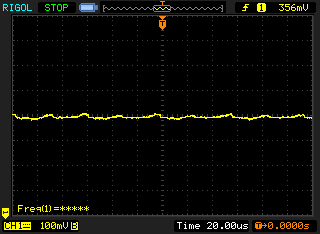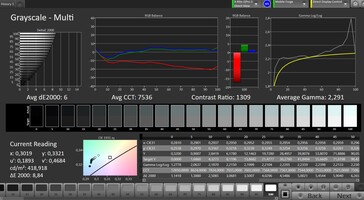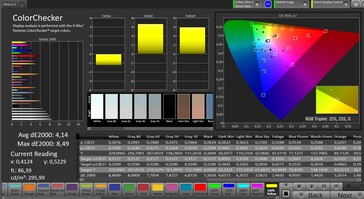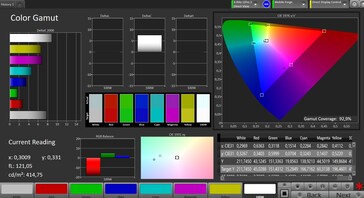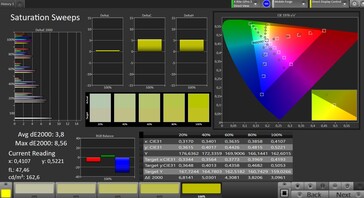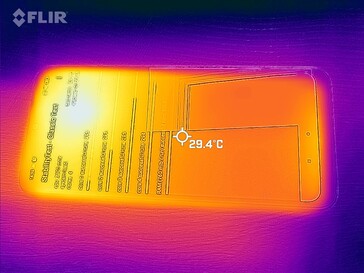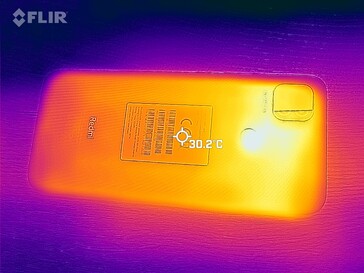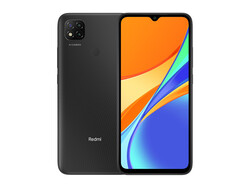Xiaomi Redmi 9C Smartphone Review: Lots of memory? Yes! Lots of power? No!
Possible competitors in comparison
rating | date | model | weight | drive | size | resolution | price from |
|---|---|---|---|---|---|---|---|
| 73.8 % v7 (old) | 01 / 2022 | Xiaomi Redmi 9C Helio G35, PowerVR GE8320 | 196 g | 128 GB eMMC Flash | 6.53" | 1600x720 | |
| 74.9 % v7 (old) | 12 / 2021 | Samsung Galaxy A12 Exynos SM-A127F Exynos 850, Mali-G52 MP1 | 205 g | 64 GB eMMC Flash | 6.50" | 1600x720 | |
| 78.4 % v7 (old) | 12 / 2021 | Xiaomi Redmi Note 8 2021 Helio G85, Mali-G52 MP2 | 190 g | 64 GB eMMC Flash | 6.30" | 2340x1080 | |
| 78.9 % v7 (old) | 01 / 2022 | Motorola Moto G31 Helio G85, Mali-G52 MP2 | 181 g | 64 GB eMMC Flash | 6.40" | 2400x1080 |
Case and features: Large phone with lots of memory
In mid-2021, Xiaomi introduced the Redmi 9C — a phone for less than 200 Euros with decent features, but it did not stand out too much among its similarly priced colleagues back then. The manufacturer released a new variant with more storage at the end of 2021, so we wanted to take another closer look at the device.
The Redmi 9C is still quite a large smartphone, but its weight of less than 200 grams is within limits. The casing is made of simple plastic, which is only enhanced by a slightly textured pattern of curved lines. The available colors are bright orange, blue, and subtle dark gray.
The 2021 model now includes 128 GB of mass storage and 4 GB of RAM and is thus better equipped than many similarly priced phones. The previous variants of the Redmi 9C were only to the user in 64 GB/3 GB or 32 GB/2 GB options. However, since prices for the older models have already dropped, the price gap between the storage variants is quite large especially for a phone below 200 Euros. The inexpensive 32 GB model is available for just under 120 Euros while the new Redmi 9C with 128 GB storage costs 190 Euros.
The largest storage variant also has a dedicated SD reader that convinces with class-leading speeds. However, there is no NFC and the outdated microUSB port might also annoy some buyers.
| SD Card Reader - average JPG Copy Test (av. of 3 runs) | |
| Samsung Galaxy A12 Exynos SM-A127F (Angelbird V60) | |
| Average of class Smartphone (5.72 - 58.9, n=68, last 2 years) | |
| Xiaomi Redmi 9C (Angelbird V60) | |
| Motorola Moto G31 (Angelbird V60) | |
| Xiaomi Redmi Note 8 2021 (Toshiba Exceria Pro) | |
Cross Platform Disk Test (CPDT)
Communication, software and, operations: Lame Wi-Fi
With a current street price of 190 Euros, the Redmi 9C with 128 GB storage plays in the class of a Motorola Moto G31 or the in-house Redmi Note 8 2021 but cannot keep up with them in terms of internet speeds. Both comparison devices feature Wi-Fi 5 and thus surf the internet much faster. For a Wi-Fi 4 smartphone, the Redmi 9C achieves standard data rates of around 50 Mbps.
MIUI 12 is based on Android 10, so further feature updates should not be expected. At least the security patches are from December 2021 and thus relatively up-to-date at the time of testing.
There is a physical fingerprint sensor on the back that unlocks the smartphone after a noticeable delay. Fingerprint recognition is reasonably accurate and worked in 9 out of 10 cases in our test. The touchscreen is easy to use and offers good gliding properties for the finger.
| Networking | |
| iperf3 transmit AX12 | |
| Xiaomi Redmi Note 8 2021 | |
| Motorola Moto G31 | |
| Xiaomi Redmi 9C | |
| Samsung Galaxy A12 Exynos SM-A127F | |
| iperf3 receive AX12 | |
| Motorola Moto G31 | |
| Xiaomi Redmi Note 8 2021 | |
| Samsung Galaxy A12 Exynos SM-A127F | |
| Xiaomi Redmi 9C | |
Cameras - Good image quality for the price
In addition to the main camera with 13 MP, there are two other, but very low-resolution, cameras on the back — a macro camera and a support camera for blur effects in portraits.
The main camera takes photos with a low dynamic range but with decent sharpness. Of course, it cannot keep up with really good phone cameras in terms of detail representation, but it does a pretty decent job for its price range. However, no details can be seen in the pictures in very low light in the lab.
Videos can be recorded with a maximum of 1080p and 30 fps, whereby the autofocus occasionally reacts a bit too slowly. Otherwise, the quality is acceptable.
The front-facing camera with only 5 megapixels takes decent selfies in good light. However, the dynamic range is not very large here either, so dark areas quickly turn into flat blacks. This can be seen well in the hair in our test picture.
Image comparison
Choose a scene and navigate within the first image. One click changes the position on touchscreens. One click on the zoomed-in image opens the original in a new window. The first image shows the scaled photograph of the test device.
Hauptkamera PflanzeHauptkamera UmgebungHauptkamera Low Light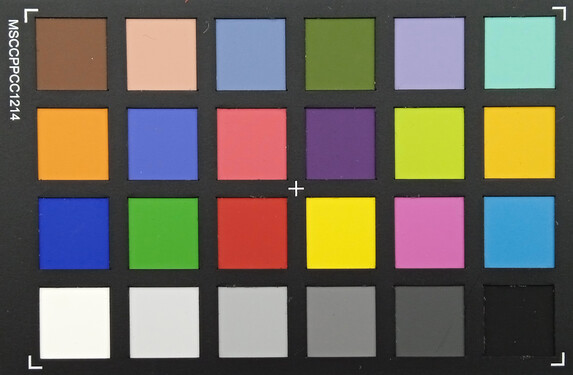
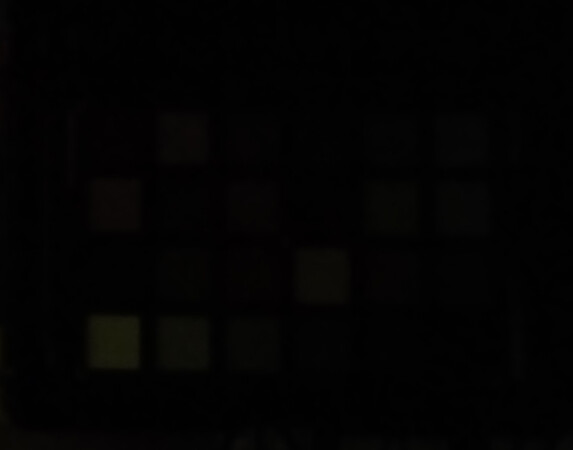
Display: Low resolution, good brightness
A 720p display like in the Redmi 9C is nothing unusual below 200 Euros. That being said, smartphones like the Redmi Note 8 2021 or the Motorola Moto G31 show that 1080p screens are also possible, and the Moto even has a high-quality OLED screen.
In terms of brightness, the panel in our review sample can keep up with other smartphones in the price range. The black value is also quite high, which negatively affects the contrast and thus the luminosity of colors.
The color reproduction is fairly true to the original but cannot compete with the OLED in the Moto G31.
| |||||||||||||||||||||||||
Brightness Distribution: 83 %
Center on Battery: 467 cd/m²
Contrast: 881:1 (Black: 0.53 cd/m²)
ΔE ColorChecker Calman: 4.14 | ∀{0.5-29.43 Ø4.77}
ΔE Greyscale Calman: 6 | ∀{0.09-98 Ø5}
92.9% sRGB (Calman 2D)
Gamma: 2.291
CCT: 7536 K
| Xiaomi Redmi 9C IPS, 1600x720, 6.5" | Samsung Galaxy A12 Exynos SM-A127F IPS LCD, 1600x720, 6.5" | Xiaomi Redmi Note 8 2021 IPS LCD, 2340x1080, 6.3" | Motorola Moto G31 OLED, 2400x1080, 6.4" | |
|---|---|---|---|---|
| Response Times | 2% | 16% | 86% | |
| Response Time Grey 50% / Grey 80% * (ms) | 60 ? | 58 ? 3% | 52 ? 13% | 6 ? 90% |
| Response Time Black / White * (ms) | 34 ? | 34 ? -0% | 28 ? 18% | 6 ? 82% |
| PWM Frequency (Hz) | 17120 | 178.6 ? | 352.1 ? | 223.2 |
| Screen | 14% | 31% | 28% | |
| Brightness middle (cd/m²) | 467 | 446 -4% | 496 6% | 423 -9% |
| Brightness (cd/m²) | 417 | 423 1% | 491 18% | 425 2% |
| Brightness Distribution (%) | 83 | 88 6% | 91 10% | 94 13% |
| Black Level * (cd/m²) | 0.53 | 0.29 45% | 0.19 64% | |
| Contrast (:1) | 881 | 1538 75% | 2611 196% | |
| Colorchecker dE 2000 * | 4.14 | 4.94 -19% | 5.5 -33% | 1.58 62% |
| Colorchecker dE 2000 max. * | 8.49 | 8.81 -4% | 8.88 -5% | 4.68 45% |
| Greyscale dE 2000 * | 6 | 5.1 15% | 6.6 -10% | 2.7 55% |
| Gamma | 2.291 96% | 2.145 103% | 2.36 93% | 2.219 99% |
| CCT | 7536 86% | 7890 82% | 8432 77% | 6674 97% |
| Total Average (Program / Settings) | 8% /
12% | 24% /
28% | 57% /
43% |
* ... smaller is better
Display Response Times
| ↔ Response Time Black to White | ||
|---|---|---|
| 34 ms ... rise ↗ and fall ↘ combined | ↗ 17 ms rise | |
| ↘ 17 ms fall | ||
| The screen shows slow response rates in our tests and will be unsatisfactory for gamers. In comparison, all tested devices range from 0.1 (minimum) to 240 (maximum) ms. » 90 % of all devices are better. This means that the measured response time is worse than the average of all tested devices (20.2 ms). | ||
| ↔ Response Time 50% Grey to 80% Grey | ||
| 60 ms ... rise ↗ and fall ↘ combined | ↗ 27 ms rise | |
| ↘ 33 ms fall | ||
| The screen shows slow response rates in our tests and will be unsatisfactory for gamers. In comparison, all tested devices range from 0.165 (minimum) to 636 (maximum) ms. » 96 % of all devices are better. This means that the measured response time is worse than the average of all tested devices (31.6 ms). | ||
Screen Flickering / PWM (Pulse-Width Modulation)
| Screen flickering / PWM detected | 17120 Hz | ||
The display backlight flickers at 17120 Hz (worst case, e.g., utilizing PWM) . The frequency of 17120 Hz is quite high, so most users sensitive to PWM should not notice any flickering. In comparison: 53 % of all tested devices do not use PWM to dim the display. If PWM was detected, an average of 8084 (minimum: 5 - maximum: 343500) Hz was measured. | |||
Performance, emissions, and battery life: Redmi 9C with little power
The MediaTek Helio G35 is responsible for the performance in the Redmi 9C. The 8 cores can work with a maximum clock of 2.3 GHz. The SoC cannot keep up with the comparison devices. The performance difference is dramatic and is over 100% in some cases.
It also becomes clear during our test that you have to make do with very little power — the screen can only be rotated with a long delay when a more complex app is running, and invoking the volume control is also delayed sometimes.
The eMMC flash is large but not fast. However, the comparison devices do not offer faster storage modules either.
Excessive heating does not occur even under longer loads; the temperatures always stay below 40 °C.
The small mono speaker on the bottom edge does not get very loud and sounds rather mediocre. If you want better sound, you can connect headphones or speakers via the 3.5 mm jack or Bluetooth.
The 5,000 mAh battery offers a decent runtime of over 15 hours, but it takes a long time to charge because the maximum charging power is only 10 W.
| Xiaomi Redmi 9C | Samsung Galaxy A12 Exynos SM-A127F | Xiaomi Redmi Note 8 2021 | Motorola Moto G31 | Average 128 GB eMMC Flash | Average of class Smartphone | |
|---|---|---|---|---|---|---|
| AndroBench 3-5 | 3% | 39% | 64% | 28% | 689% | |
| Sequential Read 256KB (MB/s) | 263.1 | 302.3 15% | 309.4 18% | 309.8 18% | 300 ? 14% | 2235 ? 749% |
| Sequential Write 256KB (MB/s) | 208.4 | 74.5 -64% | 159.7 -23% | 221.5 6% | 195.1 ? -6% | 1871 ? 798% |
| Random Read 4KB (MB/s) | 54.5 | 77.8 43% | 73.6 35% | 84 54% | 85.9 ? 58% | 297 ? 445% |
| Random Write 4KB (MB/s) | 39.7 | 47.21 19% | 88.9 124% | 109.8 177% | 58.1 ? 46% | 343 ? 764% |
Temperature
(+) The maximum temperature on the upper side is 39.3 °C / 103 F, compared to the average of 35.2 °C / 95 F, ranging from 21.9 to 247 °C for the class Smartphone.
(+) The bottom heats up to a maximum of 39.2 °C / 103 F, compared to the average of 34 °C / 93 F
(+) In idle usage, the average temperature for the upper side is 27.7 °C / 82 F, compared to the device average of 32.9 °C / 91 F.
Loudspeaker
Xiaomi Redmi 9C audio analysis
(±) | speaker loudness is average but good (77.7 dB)
Bass 100 - 315 Hz
(-) | nearly no bass - on average 33.1% lower than median
(±) | linearity of bass is average (12.4% delta to prev. frequency)
Mids 400 - 2000 Hz
(+) | balanced mids - only 4.4% away from median
(+) | mids are linear (5.3% delta to prev. frequency)
Highs 2 - 16 kHz
(±) | higher highs - on average 5.5% higher than median
(+) | highs are linear (2.5% delta to prev. frequency)
Overall 100 - 16.000 Hz
(±) | linearity of overall sound is average (25.3% difference to median)
Compared to same class
» 62% of all tested devices in this class were better, 7% similar, 31% worse
» The best had a delta of 11%, average was 35%, worst was 134%
Compared to all devices tested
» 77% of all tested devices were better, 5% similar, 18% worse
» The best had a delta of 4%, average was 24%, worst was 134%
Xiaomi Redmi Note 8 2021 audio analysis
(+) | speakers can play relatively loud (86.9 dB)
Bass 100 - 315 Hz
(-) | nearly no bass - on average 28.9% lower than median
(±) | linearity of bass is average (9.4% delta to prev. frequency)
Mids 400 - 2000 Hz
(+) | balanced mids - only 3.9% away from median
(+) | mids are linear (4.9% delta to prev. frequency)
Highs 2 - 16 kHz
(±) | higher highs - on average 5.6% higher than median
(+) | highs are linear (6.8% delta to prev. frequency)
Overall 100 - 16.000 Hz
(±) | linearity of overall sound is average (21.8% difference to median)
Compared to same class
» 44% of all tested devices in this class were better, 8% similar, 48% worse
» The best had a delta of 11%, average was 35%, worst was 134%
Compared to all devices tested
» 61% of all tested devices were better, 7% similar, 32% worse
» The best had a delta of 4%, average was 24%, worst was 134%
Battery life
| Xiaomi Redmi 9C 5000 mAh | Samsung Galaxy A12 Exynos SM-A127F 5000 mAh | Xiaomi Redmi Note 8 2021 4000 mAh | Motorola Moto G31 5000 mAh | Average of class Smartphone | |
|---|---|---|---|---|---|
| Battery Runtime | |||||
| WiFi Websurfing (h) | 15.1 | 14.7 -3% | 12.5 -17% | 17.2 14% | 19.3 ? 28% |
Pros
Cons
Verdict - Too expensive, even with large memory
The new storage variant definitely makes the Xiaomi Redmi 9C a bit more contemporary. Especially the RAM increase to 4 GB is a blessing here: It prevents you from simply not being able to run more complex apps because the working memory is not sufficient. Also, 128 GB of mass storage is a great feature for a smartphone under 200 Euros.
However, the newer Redmi 9C simply shows that its other components were already 18 months old when it was launched. The processor in particular cannot keep up with similarly priced phones in terms of speed, and Wi-Fi 4 is also becoming increasingly rare in devices under 200 Euros (~$200). There is no NFC in the Redmi 9C and there are definitely higher-resolution screens in this price range.
The Xiaomi Redmi 9C now offers a lot of storage, but it is simply too expensive at the manufacturer's price due to the slow processor.
The Xiaomi Redmi 9C does not yet look hopelessly outdated, but it is still a bit too expensive and too slow to be a real price-performance hit in the rapidly developing smartphone landscape.
The Redmi 9C can still be recommended to those who want the maximum storage in their smartphone at the lowest possible price and only use simple apps. The device could become even more interesting if the price drops significantly in the next few months.
The Redmi Note 8 2021 from the same manufacturer offers more performance, faster internet, and a higher-resolution screen. The Moto G31 from Motorola even has an OLED screen.
Price and availability
The Redmi 9C with 128 GB of data storage is available for just under 190 Euros (~$190) at the time of testing. You should compare the prices of the different color variants, where you can sometimes save more than 10%. Our lender Cyberport offers the gray variant particularly for cheap, and it is also currently available at Amazon.
Xiaomi Redmi 9C
- 01/27/2022 v7 (old)
Florian Schmitt




